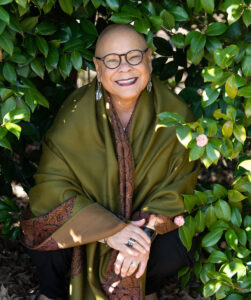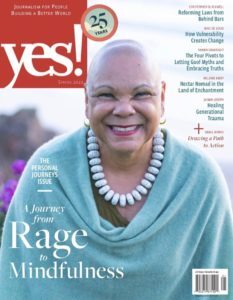Ruth King's Blog, page 4
September 2, 2022
Equanimity: A Practice for our Times
Several years ago, I took a long flight from South Africa to California. As I boarded the plane, I looked forward to taking a long nap on the fully-booked plane. As we rose into the air, I relaxed into my seat and pushed the button to recline. The person sitting behind me, a white male, started slamming his food tray, which was on the back of my seat, up and down, repeatedly, making sure I felt it. Initially, annoyed, I ignored it. But, when it continued — grumbles included — and I could feel a sense of hostility, I turned and quietly asked, “Would you be willing to stop slamming your food tray up and down on the back of my seat?”
In response, he yelled (and I do mean yelled), “If you hadn’t leaned your chair back into my lap, it wouldn’t be necessary!”
A flash of silence shot through the plane while a flood of thoughts rattled my mind: Who in hell does this white fool think he’s talking to? I have a right to recline my chair. How dare you disrespect a black woman, and so publicly. You wouldn’t treat a white man this way. I was furious and felt chastised and embarrassed. I could also sense how others on the plane had been triggered by his response. It appeared as though the flight attendants had gone AWOL. Several people started fidgeting and coughing. The white men opened newspapers, as if on cue. Babies started crying. Black men began to unbuckle their seat belts and stand up. In my mind, I thought I heard a white woman ask if someone could open a window. And the black women stared at me, rolling their heads as if to say, “I hope you kick his ass so I don’t have to!” It was quite the “deer in the headlights” moment – all of it within ninety seconds.
I often think about power and how quickly a situation can change with a caring and wise heart. I think about the moments when we can see beyond judgment and self-interest to choose rather than react — the moments when small, caring choices can influence a social balance. This, I think, is the power of equanimity.
Equanimity is a sustained state of balance, seeing what’s here with evenness of mind — a mind that is touched by life but unbroken by its ever-changing nature. It’s a prominent concept in Buddhism, often represented in images of stillness, ease, compassion, and strength and regarded as the fruit of spiritual practice.
Within this soreness, I knew that my freedom and well-being was not dependent on anyone’s behavior going my way.
Equanimity is an invaluable inner resource that is cultivated through awareness. It is the experience of knowing the movement of the mind without reactiveness, an experience of grounded presence amidst extremes. When the mind is steady and responsive, we can say to ourselves, “This moment is like this, and it doesn’t have to be different right now. I can allow what is here and offer what is needed.”
Imagine the power of this resource as we move through a racialized world.
While this incident wasn’t overtly about race, racial distress had been activated, and, in addition to my own distress, it needed to be attended to. I could have gone to war, insisting on my right to recline my seat, but there was more at play than my comfort. The white man seated behind me could have handled the situation more skillfully and less hatefully, but he didn’t. What was happening wasn’t personal or permanent, and it was far from perfect. We were thirty thousand feet in the air for the next twelve hours. I considered my height, being short enough to tolerate an upright seat; reclining was my right and preference, but not a necessity. I was at a choice point.
I raised my seat.
When I raised my seat, the distress palpable throughout the plane settled. I wasn’t unphased by the white man’s verbal assault, but I didn’t become unglued or get knocked off center. I could be with what was happening while it was happening and attune to the collective nervous system of the enclosed plane without feeling severely compromised. Deep within me, I was okay.
An hour or so later, when I stood to stretch my legs, I looked at the white man sitting behind me. He had fallen asleep. I noticed the peace in his face. I also noticed that he was close to seven feet tall. His knees more than touched the back of my seat, and I could see how reclining my chair created a hardship for him. I imagined how often he had been teased as a child for being tall and awkward, and I wondered how long he had had this attitude and how he may have felt “put upon” or even bullied by others. Seeing such innocence softened the hard edge of the ignorance he had displayed earlier. This was followed by intense soreness in my chest as I recognized, walking through the tight aisles of the plane, that most of the people I passed were white men. I recognized a secret wish that had flashed through me: a wish for a white ally — someone who would have intervened and said, “Man that was rude. You owe this woman an apology.” Yet, within this soreness, and from years of mindfulness practice, I knew that my freedom and well-being was not dependent on anyone’s behavior going my way. In that moment, I just gave my heart caring rubs.
Equanimity is awareness so spacious that whatever arises in our mind and heart, whether agreeable or disagreeable, is small and incidental compared to awareness itself. In other words, when we are equanimous, nothing is left out of heart’s view.
We might begin to understand equanimity using nature as a metaphor. For example, equanimity can feel internally like a great mountain, with the mind solid and stable, undisturbed by the changing seasons. Or it can be like the ocean, with the mind vast, deep, and immeasurable, undisturbed by whatever swims, floats, or is housed in its waters. Equanimity can be like a strong fire – roaring, engulfing, and transmuting, undisturbed by whatever is thrown into it. Or like immense space – open, allowing, and receiving, undisturbed by the objects that arise and pass away.
As we walk through the minefields of social injustice and hardship, we may want to call on the strength of these elemental inner resources for balance and equipoise. For example, there are times when we will need to stand our ground, strong like a mountain, and observe what emerges. And there are times when we may need to add a spark of fiery truth to a situation. Other times, we may need to open and allow more space around the tightness of our worries, or let go and be held by an ocean of love. As I reflect on the plane incident, I see that I relied on the element of space to open to everyone on the plane, not just my own comfort. In this choice, the entire nervous system of the plane came into balance as I did.
Indian philosopher Jiddu Krishnamurti spoke beautifully to the essence of equanimity when he said, “When the mind is still, tranquil, not seeking any answer or solution, neither resisting or avoiding – it is only then that there can be a regeneration, because then the mind is capable of perceiving what is true; and it is the truth that liberates, not our effort to be free.”
Adapted from Mindful of Race: Transforming Racism from the Inside Out by Ruth King, ©2018-Sounds True. Published by Lions Roar, 2020. Republished Ruth King's Blog, 2022.
The post Equanimity: A Practice for our Times appeared first on RuthKing.net.
July 24, 2022
Serendipitous Encounter: It’s Toni Morrison’s Fault!
Our race-inflected culture not only exists, it thrives. The question is whether it thrives as a virus or a bountiful harvest of possibilities. ~ Toni Morrison
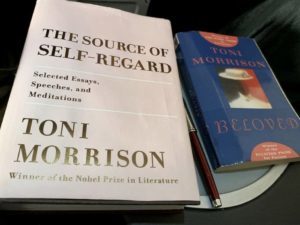
You likely know how it is, the bustle of getting to the airport and through security, then finally getting settled in your seat. I had just finished a week at Spirit Rock Meditation Center in California celebrating The Gathering of over 70 Buddhist teachers of African descent for five days followed by two days of training with over 350 black folks. Tired and beaming, I’m headed home to Charlotte, NC.
As I board the flight and began settling into my aisle seat, I pull out my read by the late Toni Morrison, The Source of Self-Regard. The white man sitting next to me is also settling in, and pulls out his read, Toni Morrison’s Beloved. We glance each other a smile and continue to settle in. Before takeoff, he orders a gin and orange juice and I order water without ice. We introduce ourselves. Let’s call him John.
John shared that he is returning from spending a week in Napa golfing with 8 college guys he’s known for over 25 years. This was their 10th year meeting annually, and he expressed pride in having such good friends at the age of 53. I look at him and realize he is the age of my son although he seems older. Maybe it is me that feels older. I laugh silently.
John seemed energetic and shared that he was eager to get home to his wife and daughters. I wasn’t sure he would want to hear about where I had been, or maybe it was that I didn’t want to share it with a stranger. Instead, I shared that I had read just about everything Toni Morrison had written and that this current book, apparently the last one published before her recent death, was the most profound in terms of character and craft. I asked John what motivated him to read Beloved. He said that he had purchased the book years ago but had never read it, and as he was leaving home for this trip, the book “fall off his shelf.” For some reason, a line in Beloved flooded my memory: “…You just can’t mishandle creatures and expect success.” Next, I thought: What a ride this read will be for him. He ordered another gin and orange juice before take-off.
After take-off, we settled into our respective books. I had one chapter remaining in The Source of Self-Regard. As with Morrison’s other publications, it’s not a fast read, more a savoring. I often will read and re-read a paragraph then ponder it for a while before reading on. I’m mostly in awe at how Morrison is persistent in her message to talk “to” Black people, not talk “for” them, and how her focus is not on slavery per se, but rather on black culture, interior pain, and character. This last chapter had me feeling satiated, sitting up straighter, clear, centered, and fortified by her words. This was on top of feeling deeply satisfied from the field of wise care I had bathed in with other Black Buddhist teachers and practitioners. I wanted for nothing!
I glanced over at John, who was also into Beloved. He seemed tight and edgy. I recall feeling that way when I read Beloved years ago. He, too, reads then puts the book down, then returns to reading. He seemed to be about one-third of the way into the book. He ordered another gin and orange juice. I wonder if he was reading Chapter 16 (yes, I remember it vividly), where Sethe instinctually decides to kill her children instead of allowing them to be taken and sold into slavery. That moment when, once read, we can’t help but ask: Is this criminal? What is the greater crime? Or maybe he was squirming in his seat because he was reading about Sethe being held down and beaten while the white boys stole milk from her breast, leaving nothing for her children.
Dinner is served. We rested the books. Surprisingly, John, now quite red-faced, pulls out a photo of his wife and children. I join him in this prideful moment. I wonder if reading Beloved makes privilege palpable, making one cherish their loved ones even more. This was all that was spoken over our meal. I wondered if it felt dangerous or too risky for him to ask me about my life. Or worst, as least for me, that it never occurred to him.
I finished the last few pages of The Source of Self Regard and closed the book, bringing it close to my heart. As an author, I’m deeply inspired by Morrison’s example. I marvel at her clarity and brilliance; how close she stays to her inside voice, and how brave she is to trust and share it unapologetically. I am grateful that she lived and that she taught us, and I can taste this goodness. I ordered a glass of red to toast the moment.
I glanced over at John who was napping with Beloved at his chest and surrender on his face. Was he napping because this is what one must do from time to time when reading the dense forest of Morrison’s work, or was he napping because his gin and orange juice had finally caught up with him? It didn’t matter, really. Morrison’s work is meant to be meditative. My guess is that we were both somehow in the “scorched earth” of Morrison’s wise love. Therein lay the bountiful harvest of possibilities. ~ Ruth King
The post Serendipitous Encounter: It’s Toni Morrison’s Fault! appeared first on RuthKing.net.
June 27, 2022
Collusion: A Racial Inquiry
Attention Influencers
Much has been revealed from the House’s Committee hearings investigating Donald Trump and Trump loyalists’ involvement in efforts to overturn the 2020 election and January 6 insurgence at the Capital. Much of it is revolting, enraging, and heartbreaking. And then there are those times of confusion from not being sure you fully understand what is happening and times of despair from being painfully clear that you do!
I can imagine the emotional weight and wit involved in the Committee’s effort to sort through a convoluted chronology that is slowly and painstakingly revealing what happened, all in an intense atmosphere of what feels like a regression of democracy, inclusive of voting suppression, racism, war on the poor, white male supremacy, religious hegemony, the overturn of Roe v. Wade, environmental exploitation, mass gun violence, and variants of COVID, to name a few. As Influencers, we also hold a tremendous weight discerning complex dynamics in entrenched and often unconscious systems in service to diversity, equity, and inclusion initiatives. Thus, in many ways, the Jan. 6 Hearings mirror similar challenges.
While the Hearings can be hard to watch and to track, the job of the Committee is to investigate what happened so that justice is [hopefully] served, and history doesn’t repeat itself. Herein, too, lies our work as influencers. For example, as I witness the Hearings, I notice collusive complexities intersecting morality, white supremacy, and self-interest, and how our existing governing structures uphold these concerns. What do you see?
At this tumultuous time, we have an opportunity to both understand what is happening politically and examine for ourselves our relationship and its impact on how we serve.
Our Inquiry
A few questions come to mind for our inquiry: (1) How are the Jan. 6 Hearings impacting your work in diversity, equity, and inclusion? (2) What are the hearings’ revealing that resemble the power and structural challenges you face in your work as an influencer? (3) How is what’s happening politically affecting why you serve and how you serve organizations?
The aim of this inquiry is not agreement or having the absolute answer, not that one exists. Rather, I’d like to offer a few thoughts intended to support critical thinking and land you in the heart of your own morality while strengthening your understanding and influence. Consider the following inquiry as you witness the unfolding of the January 6 Committee and testimony, and your work within organizations.
Collusion
In my book, Mindful of Race: Transforming Racism from the Inside Out, I discuss Collusion as a strategy that maintains white privilege and ultimately white supremacy. Collusion involves acts driven by our conscious or unconscious desire to gain or maintain racial group membership and status. We collude to gain favor or approval; to play it safe, fit in, or avoid being a target of attention or harm. Collusion is one of many forces that keep white supremacy intact.
White Supremacy
White supremacy is white people having dominant racial group power over the welfare of other races through governing structures of influence. It includes the inherent and normative belief that white people are superior to other races. When we look at the dominant race within the US Senate, for example, we see white people, specifically white Republican men. This is not new – white men have historically held such stations with presumed superiority.
White supremacy shapes a political and organizational culture in which whoever is operating within this culture must play by certain rules. Power norms within this culture dictates who’s in and who’s out and what’s appropriate and what’s not. It further determines the degree to which someone can play the game, challenge the game, or be tossed out of the game. One could say, for example, that the Jan. 6 insurrection, and all that led to it, was a way of demanding that the structure of white supremacy is maintained, by any means necessary.
Collusion & White Supremacy
Collusion has been on bold display in the days, weeks, and months prior to and following the insurrection and Hearings. We could say that another word for collusion is self-interest. For example, If I’m a white man and I believe (consciously, historically, or unconsciously) that white men should be in charge, and – by the way – they are, and I want to maintain my status in whiteness and power, I am going to do whatever I can to preserve my membership (regardless of my race or gender).
As I listen to those who have testified as well as the rationale for refusing to testify, I can see various combinations of the following views:
I’m fine with Trump because I believe in what he stands for.I’m fine with Trump because he serves my self-interest.I’m fine with Trump but I’m not breaking the law.I’m no longer fine with Trump and I’m not breaking the law.I’m no longer fine with Trump but now I must protect my interests.I take the 5th!What collusive dynamics do you see as you watch the Hearings?
What collusive dynamics can you glean from the Hearings that are reflected in organizations you serve?
What collusive dynamics would you add to this list?
Gratification – Danger – Escape
In the mindfulness traditions, a tripod is often represented that speaks of gratification, danger, and escape. To dramatically simplify this framework (and adapt it for this inquiry), gratification has to do with our drive to get more of what we want (greed). Danger has to do with how far we are willing to go to make sure what we don’t want doesn’t happen (aversion and ill will). And escape is what we are willing to disregard or ignore in our preferential pursuits (delusion).
As the Hearings’ testimony unfolds, you can perhaps discern the nuanced ways gratification, danger, and escape is on display. When whites in power collude, they are betting that their choice to behave a certain way will get them more of what they want, keep what they don’t want at bay, and if necessary reinterpreted or ignore the impact of its actions on others and the law.
As you weigh the January 6 testimony, how might this tripod apply?
How does this tripod impact diversity, equity, and inclusion advancement?
Your Insight, Your Choice
We all have ways of interpreting the information we are receiving from the Jan. 6 hearings. In this blog, I’m not trying to be right; I’m trying to be critical, and to invite us to see for ourselves how the Hearings are revealing structural and cultural ways we have been conditioned to relate to racial power and influence. We often talk of democracy as if it has always been the truth of our country, but for the majority of us, it has never been the truth – it is an aspiration that we must continue to fight for, and the Jan. 6 Committee is concerned with just that!
As influencers, the Jan. 6 Hearings offer us the glaring opportunity to see deeply embedded systems of complicity, duplicity, and hegemony in our political process. Seeing these structures and how they are integral to political life supports us in recognizing and understanding some of the roadblocks we encounter in diversity, equity, and inclusion efforts and how we might respond with a more analytical mind, not just an emotional heart.
Frustration is understandably high! I often hear comments like I’m so tired of hearing this Jan. 6 story again and again. I’m exhausted thinking about it. I just can’t watch the news anymore. I’m ready to leave this country. Or our aversion is expressed in body language, in the way we bring lifelessness to the conversation, or by avoiding it altogether. Believe me – I can relate!
Like it or not, as DEI influencers, we can watch the Jan. 6 Hearings and grow our recognition of how harmful political norms governing our lives are alive in our organizational work and do our part to bring them to light. The three questions posed earlier are not meant to be answered once or answered quickly. Rather, they serve as repeat questions that keep us aware of the broader context in which we operate and the values influencing our choices.
What values govern your DEI work? What if, for example, the fundamental values of our work were: (1) No one is harmed or exploited; (2) Everyone is valued, able to afford basic needs and strive, and; (3) An understanding and deep respect that every thing we do impacts the greater whole. It’s here, in this mindful of race inquiry, that I return time and again. It calls all of us – Indigenous folks, Black folks, White folks, all folks – to practice seeing reality through the lens of collective wellbeing and care. Having a conscious, analytical framework to rigorously examine our habits of mind can refine morality, reduce emotionality and impulsivity, increase discernment, and inform wise action – actions that support all of us, not just some of us. This, we can do!
I will close with this inspirational quote from James Baldwin:
A country is only as strong as the people who make it up, and the country turns into what people want it to become. We made the world we’re living in, and we have to make it over.
For more information on how to wake up together in racial affinity, visit my course on Brave Space.
The post Collusion: A Racial Inquiry appeared first on RuthKing.net.
May 27, 2022
We Fall Down, We Get Up! Metabolizing Grief in Intense Times
I’m reluctant to rehash this but it serves as a wake-up call and a cry for mercy, justice, and healing.
As many of you know, the last few weeks have been horrific! This past Tuesday, May 24, nineteen children and two teachers were murdered in a mass shooting at a predominately Latin-x elementary school in Uvalde, Texas, by an 18-year old gunman, who had shot his grandmother in the face prior to these killings. On May 15, in Orange County, CA, five Asian elders were shot in church, one dying, by a 68 year-old man from Las Vegas who drove over four hours to Santa Ana.
And one day prior to this horror, on May 14, in Buffalo, New York, ten Black people were killed and three others injured in a supermarket by an 18-year-old self-identified white supremist, who drove over 200 miles to this predominantly Black neighborhood for this intentional act. One of the people murdered in this shooting was Ruth Whitfield, 86, who was returning from visiting her husband of 70 years in a nursing home. Two days later, Ruth Whitfield’s granddaughter, Simone Crawley, a professional diversity consultant, had something pressing to tell folks on LinkedIn:
“My 86 year old grandmother, Ruth Whitfield, was murdered on Saturday by a hate-filled, perverted White supremacist GROWN MAN. If it had been ANY other cause I could process it differently. I could rationalize it somehow. But this is too close to home for me. How do you dedicate your life to fighting bigotry, trying to educate White people on their role in ending this blight on humanity all for it to take your own grandmother?! I FEEL LIKE SUCH A F***ING FAILURE!! Like everything I’ve ever done in my career was completely pointless!
I know that it should make me want to double down and be proof of why it’s such important work, but I promise you, I feel the opposite. I feel like a fraud. Like I’ve been spoon-feeding White people these conversations about race so as not to upset them. Feeding into the White fragility over and over again. Asking them about their racist relatives and having them tell me that it’s not a reflection of them. BUT IT IS!!!!!!!!!! You have chosen the side of hate every second that you remain silent. Telling us that White children can’t handle conversations about race but my grandmother's great grandchildren must look at her dead body! And I will have to tell my children her story because she won’t be there to meet them.
The last time I saw her we were sitting in her living room and she was telling stories about her childhood in the rural South, stories about the racism she has endured since birth, and I cannot believe it is the reason her life is over. She had at least 20 more years left to live -- she didn’t use a walker, or a hearing aid, even have significant sight issues. I always struggled to even see her as elderly…”
Ms. Crawley is Founder and CEO of Crawley Cultural Consulting. She’s made diversity, equity, and inclusion (DEI) a life’s work. She ended this post with a request and a prayer:
Pray for my soul. I’m at a moral crossroads - to vibrate higher in love or turn a corner and meet these mfs in depths of hell. I’m paralyzed right now. She [my grandmother] once wrote me a letter: “We fall down but we get up.” I pray that I can one day, but that day is not today.
That her grandmother was killed indiscriminately by a white supremacist seems too ironic to bear, especially given Simone’s professional work in antiracism, yet for her and her family, and for the many grieving families and others affected by systemic ignorance, hatred, and violence, it is the territory in which we live. How do we grieve and metabolize the incessant killings of black and dark bodies occurring at increasing speed across the nation and throughout the world? How do we take both Ruth Whitfield’s advice and Simone Crawley's profound grief to heart: We fall down but we get up - But that day is not today!
But that day is not today!I can only imagine Simone's heartbreak. Sometimes, we must acknowledge to ourselves But that day is not today! and let that be! I’m reminded of this every time I experience the visceral blow of racial hatred, which is often. I’m always caught off guard, surprised, and disoriented. I catch myself saying things like: I can’t believe it! How could this happen again? I feel like I’m in quicksand, my tongue is tied, and my thoughts are racing. I’m boiling inside and i feel on edge, afraid of being in my own skin - afraid of what might happen next. I feel enlarged and like i'm becoming monstrous on the inside, and I fear it is showing on the outside and there is nothing I can do about it. I feel personally threatened and I can glimpse what it might be like to harm others. It feels dangerous to feel and to not feel. While my grandmother was not killed like Simone's, I’m reminded of my father being killed by gun violence, and so many black bodies dying. Death feels engulfing. It all begins to race together in a timeless and unceasing tsunami. And while I can recognize my initial disbelief as a trauma response, there is a part of me that believes racism does not exist because it should not exist – but it does.
It makes sense that those of us sensitive and devoted to racial justice and healing could be shaken to the core, blown away, and knocked off center by the blatant and insistent fact of racism. Sadly, we are all vulnerable and not in control of what happens to ourselves or others. Understandably, there are times when you must shut it down, and in a non-harming way, give yourself time to just be in the raw of it all and let it rip! I would encourage this downtime to be interspersed with hot soaks, long walks, time in nature, spontaneous naps, a wise friend or two or support group, and occasional warm hugs.
We Fall Down,When we fall down, there are times when we can rest and attend to grieving. We might be able, for example, to tenderly shift our attention away from the story of the horrific incident and give priority to the pain we are experiencing, and the movement of pain through the body.
Nobel Prize in Literature and Pulitzer Prize for Fiction winner Toni Morrison mindfully describes a grieving character in one of her books this way: “
The loss pressed down on her chest and came up into her throat. It was a fine cry – loud and long – but it had no bottom and no top, just circles and circles of sorrow.”
The medicine Morrison is offering here is that of noticing and allowing the waves of grief to have its nature. By giving our attention to the circles of sensation often flooding the body, we will notice when they naturally subside. And when the intensity of dread and grief lessens, we can begin to rest in the warm sogginess of our own good hearts. This is our practice! It’s not simple, just necessary: An antidote to pushing when we are literally rocked to our knees.
It makes sense that we would feel the hurt of racism - it's not intellectual, and our bodies absorbs the blow. Taking care of ourselves is not a luxury; self-care is how we heal and how we ripen our inner capacity to respond to the world with empathy and care. Self-care is often not our first instinct. However, we can learn to experience our resilience as we rest by opening our awareness to feel, from the inside out, the strength in our legs, the muscle in our heart, and the power of our backbone to literally lift ourselves up. Staying close to our breath and allowing our tears to be free also helps. Beloved Ancestor Toni Morrison writes in A Mercy:
You don’t need to try and make it all go away. It shouldn’t go away…and I’m not going to hide from what’s true just because it hurts.
This is what we come to realize when rested!
But We Get Up!Like Simone Crawley and many others, my life’s work is educating on systemic racial awareness and self-care amidst overt racist acts, within grief, and at times, on top of burnout. I often ask myself:
What keeps us sitting up straight with a strong core despite our circumstances?
We must think collectively and historically to understand and appreciate our spirits. Foremost, it’s a moment-to-moment consideration and a practice of remembering: Remembering the present moment, moment to moment. Remembering that we’re not dead yet, and at this moment, we can breathe. Remembering our ancestors, our faith, wisdom teachings, and our practice. Listen to the elders who impart wisdom from generation to generation. Remember all the precious nuggets of insight they transmit to us. Remember the message of Ruth Whitfield - the grandmother to all of us: We fall down but we get up.
What messages have your ancestors or elders imparted to you? What stories will you share with children and grandchildren?
We also must remember to have faith. Yes, we are vulnerable. Anything can happen to us at any time, but we need not be victims. Toni Morrison writes:
“The presence of evil is something to be first recognized, then dealt with, survived, outwitted, triumphed over.”
This is powerful wisdom from a wise one who understands the horrors of past and present times. While there are not broad victories readily evidenced in our efforts, we still must use our bodies and minds to do everything humanly possible to end racism. The growing violence among us should ignite a voting response that ensures no body is harmed. Share your wise hearts in your community and at the polls.
Wisdom tells us that there is the good, the bad and the ugly in all circumstances that we encounter. We’re not in complete control of situational outcomes, nor can we comprehend the vast and invisible effort and prayers operating on our behalf. I believe that those of us functioning with a strong core are supporting those of us in despair, and those of us in despair are grieving and healing for those of us standing strong. And our experiences change constantly. This is the interrelated structure of mutuality. This is nature at play in the vast skinless body of awareness in which we inescapably belong, and it is our basic goodness at its most holy.
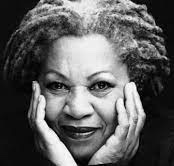 “Misery doesn’t call ahead. That’s why you have to stay awake - otherwise, it just walks on in your door.” ~ Toni Morrison
“Misery doesn’t call ahead. That’s why you have to stay awake - otherwise, it just walks on in your door.” ~ Toni Morrison
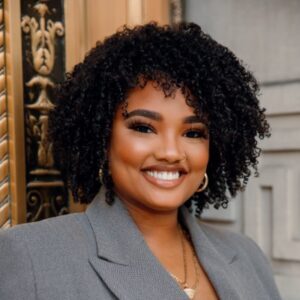
Simone Crawley, Founder & CEO, Crawley Cultural Consultant, and Granddaughter of Ruth Whitfield
The post We Fall Down, We Get Up! Metabolizing Grief in Intense Times appeared first on RuthKing.net.
May 2, 2022
Reflecting on the Water Element
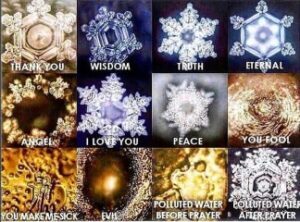
As many of you know, I’m fascinated with systems of meaning - sacred geometry, artistry, the miracle of nature, and the many paths of discovering who we are and returning to what we deeply know as resonate truth.
Recently I’ve been reflecting on the water element inspired by the research of Dr. Masaru Emoto in The Hidden Messages in Water. His findings reveal the formation of water as influenced by our thoughts. I especially relish looking at his pictures of ice crystals and find myself drawn to their visual symmetry and exquisite patterns, not to mention the power of mind and interdependence.
Dancing with AttentionIn some ways, the water crystals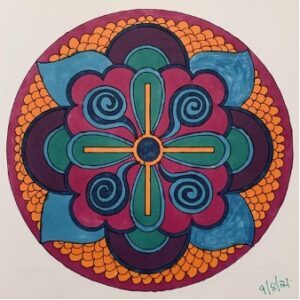 remind me of the mandalas that I’ve enjoyed coloring over the years. There’s no one spot where I’m supposed to start coloring a mandala. Rather, the mandala invites my mind and heart to begin wherever I want. Then, as I make my way around or into the mandala, the coloring process finishes itself. Color choices, the pressure of my hand against the paper, the margins of the lines – all fuse together in a blissful expression, and often a satisfying release. I marvel at the fluidity of the water element and its cohesive properties.
remind me of the mandalas that I’ve enjoyed coloring over the years. There’s no one spot where I’m supposed to start coloring a mandala. Rather, the mandala invites my mind and heart to begin wherever I want. Then, as I make my way around or into the mandala, the coloring process finishes itself. Color choices, the pressure of my hand against the paper, the margins of the lines – all fuse together in a blissful expression, and often a satisfying release. I marvel at the fluidity of the water element and its cohesive properties.
When I look at an ice crystal, I also drop preoccupations with where to begin. I may notice the faint trace of a hexagonal prism at first. But by now it has morphed into some other symmetric shape suggesting a star, a diamond, a beautiful fern. Our mind works the same way - it constantly dances with you, inviting you to look closely at its delicate patterns. With presence, you are invited to soften and let go of too much analysis. As you zoom in and zoom out, you can experience and even appreciate the mind coming into ease through this graceful dance.

I imagine the crystals melting or morphing into some other hybrid of water molecules. The earth element of my body would hardly hold together or be purified without the softening contours of the water element. That’s what makes a glass of cool water seem so satisfying and nourishing. The water just flows, while my body’s earth element knows how to take it in, absorb it, swim in it. The fire element in my body knows how to keep it at the optimal temperature, and the wind element knows how to suffuse it with oxygen.
Water Prayersl often look beyond my favorite pictures of ice crystals, beyond my body and coloring, to see a declining democracy, racial hatred, planetary destruction, and an overwhelming inner tsunami of muddy waters. I allow my rage and grief to swell, to soften, and then dissolve. In these moments, I experience the water element as a force of nature. Water collects itself, flows into other instantiations of itself, becomes larger. Oceans are fed. It also erodes the earth element if the conditions are right. Entire canyons are carved out. I gaze at these displays of gravitas with deep appreciation and gratitude for the life-giving force of water. I'm humbled by the generosity of water and I pray to water for racial healing and global wellbeing, and that the purity of water remain protected from human harm.
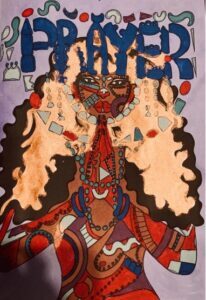 I bow to the nature of water, intimately recognizing myself: how it crystallizes, coheres, becomes different forms, dissolves, flows into others, becomes larger, and merges. I’m mindful that the water element is unpredictable under changing conditions. We can experience it as a scarce resource or an overwhelming flood. I'm thankful that I can feel a blissful release of racial distress when I surrender to the nature of water. At the same time, there must be a level of ease and comfort within my body to reflect this way. A body that feels disconnected, anxious, or traumatized needs a steady dose of mindful settling to soften then open to the refreshing flow of water. That’s why I’m so grateful for learning insight meditation many decades ago. In this practice, we learn to sit with ease – many of us for the first time. We learn to recognize and embrace our disguises of rage, fear, perfection, depression, or ignorance often for the first time. We discern our identity as racial beings from an embracing and inclusive perspective. And we can more intimately discern our humanity, perhaps for the first time.
I bow to the nature of water, intimately recognizing myself: how it crystallizes, coheres, becomes different forms, dissolves, flows into others, becomes larger, and merges. I’m mindful that the water element is unpredictable under changing conditions. We can experience it as a scarce resource or an overwhelming flood. I'm thankful that I can feel a blissful release of racial distress when I surrender to the nature of water. At the same time, there must be a level of ease and comfort within my body to reflect this way. A body that feels disconnected, anxious, or traumatized needs a steady dose of mindful settling to soften then open to the refreshing flow of water. That’s why I’m so grateful for learning insight meditation many decades ago. In this practice, we learn to sit with ease – many of us for the first time. We learn to recognize and embrace our disguises of rage, fear, perfection, depression, or ignorance often for the first time. We discern our identity as racial beings from an embracing and inclusive perspective. And we can more intimately discern our humanity, perhaps for the first time.
Do conditions in your life feel supportive of such an inquiry? We'd like to help! A good place to start is a Beginner’s Guide for Meditating with Race, which is freely offered on my course website. Importantly, like the water element, we naturally cohere with others of like minds. Perhaps you are ready to form a Racial Affinity (RA) group and go through my Brave Space course together. Through May 30th, receive a 25% discount on the Six Hindrances to Racial Harmony course. Or sign up for my newsletter so that you can get regular updates on all my offerings!
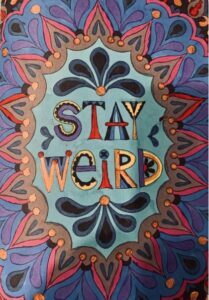 The Mindful of Race Institute nurtures space that supports mindful, honest inquiry. And, when the time is ripe, we gift each other with precious reflections, just as I have gifted you with this water element reflection.
The Mindful of Race Institute nurtures space that supports mindful, honest inquiry. And, when the time is ripe, we gift each other with precious reflections, just as I have gifted you with this water element reflection.
You know, they straightened out the Mississippi River in places to make room for houses and livable acreage. Occasionally the river floods the places. “Floods” is the word they use, but in fact it is not flooding; it is remembering. Remembering where is used to be. All water has a perfect memory and is forever trying to get back to where it was ~ Toni Morrison
We look forward to supporting your flow and purifying your waters!
The post Reflecting on the Water Element appeared first on RuthKing.net.
March 24, 2022
Spheres of Influence
In the new issue of Spiral magazine, I discuss how mindfulness can help us meet the "rough edges of racial distress.” With mindfulness, we can open to healing modes of inquiry and response. For those of you who are influencers in organizations, this is good news!
Mindfulness is powerful medicine that helps us meet racial distress with compassion and inner stability. Attending internally may feel like a privilege in the face of surrounding racial distress, yet for influencers, this necessity serves to transmute our justifiable rage into fierce clarity. Imagine turning your gaze toward your particular spheres of influence: leaders, communities, organizations, and other influencers. You might ask yourself:
Do I have the clarify and resolve to educate leaders on racial habits of harm? Where such habits of harm are active, even in well-intended organizations?Can I encourage the communities and organizations I serve to incorporate healing inquiry and wise response to structural challenges?Can I engage in this influential work with inner stability, clarity, and an intention of wellbeing for all?After you read the article in Spiral magazine, I hope you check out my book Mindful of Race. It delves deeper into racial habits of harm that manifest through dominant and subordinated racial group dynamics, and our role in both harming and healing.
Vital Role for Influencers in OrganizationsThe work I'm encouraging for influencers require a longer gaze - a contemplative approach not driven by deadlines or an urgent call to comfort ungrounded anxiety. The energetics to do something (and anything) in fact can feel urgent, but the process requires a mature and thoughtful response. For influencers in organizations, such grounding is important to know directly and can only be experienced from within.
This summer, the Mindful of Race Institute will begin offering a 12-month Brave Space program through its online learning academy. The Brave Space program engages multiple racial affinity (RA) groups within an organization in:
Investigating your racial conditioning and impact through mindfulness-based inquiry;Reducing internalized psychological distortions with members of your own race, and;Attending to how you integrate racial awareness and how members of your own race impact others by consciously progressing through three stages of group development: Inclusion, Control, and Belonging.The immersive 12-month Brave Space program provides influencers with a solid foundation for understanding their own racial conditioning. Without understanding ourselves in this deeper and insightful way, our capacity for understanding and influencing the culture of organizations is deficient and short-lived. This program also provides influencers supporting organizations with a powerful structure that deepens and augments ongoing DEI efforts.
The Brave Space program includes monthly lesson plans, monthly racial inquiries, instructional videos, and guided audio meditations by Ruth King.
MaturationThrough structured and supportive monthly guidance, we are bringing to light our buried uneasiness, our deceptive discomfort, and our unacknowledged despair. We are leaning into what is unfamiliar and inspecting more tenderly what is habitual and defended, as well as what is worthy of celebration. We are recognizing the stories we have been told and the stories we tell ourselves. We are seeing more clearly our role in racial harming and healing. We also experience the relief that self-awareness, honesty, vulnerability, and presence make available to us and others as we recognize our kinship and innate propensity for kindness, insight, and care. When we ripen our capacity to connect from a deep understanding of ourselves as individuals and as individuals membered in racial groups, we strengthen the organization's capacity for genuine understanding, connection, and collective potential.
Intrigued? I Hope So! Stay up to date on Brave Space happenings by signing up at our Online Learning Academy or send your questions to support@ruthking.net. We look forward to supporting your journey.
The post Spheres of Influence appeared first on RuthKing.net.
February 20, 2022
YES! Magazine Article
The post YES! Magazine Article appeared first on RuthKing.net.
February 3, 2022
Black History & Love
I have mixed feelings about Black History Month in America. It’s not that I don’t value Black history – I devalue hypocrisy. We’re living in fever pitch social violence; political hostility toward equality, critical race theory, and educating on American racial history; rezoning and threats to voting rights in Black communities; white nationalist insurgence on the State Capital; the outrage of appointing a Black woman to the Supreme Court; economic exploitation of the working-poor; and too many folks resisting and resenting the need for the Black Lives Matter movement. There are far too many issues to list here!
The questions on my mind are: Why do we have a Black history month in America? Who is it for? How is it that we claim to honor Black History in February when it is socially, politically, and systemically devalued the remaining 11 months of the year? What delusions contribute to us forgetting that we belong to each other, this planet, and to something greater than our own self-interest?
My ancestors and Black history as I know it sustain and inspire me every day of my life. Nothing we are experiencing today compares, and yet it does. Eddie Glaude's book Begin Again references Amiri Baraka's writings on the changing same, "...that sense of alienation rooted in terror and trauma, which remains no matter the shifts and permutations in our lives, and is exacerbated by the country’s forgetfulness." Too many of us live with the pain of this truth, and too many of us don't. With racial awareness we can see, feel, and heal; we can transcend fear, and tender ourselves into the experience of belonging, where we don't use other races as a means of outrage or escape. Of course, I'm assuming this is your aim. If not, what is?
While I don't want to damper anyone's acknowledgement or celebration of Black history in America, I do want to stress that understanding how we have been individually and collectively programmed to think about race and racism is at the root of racial harm and racial harmony, internally and externally, and this is not a 30 day annual event, but rather a life practice. Regardless of your race, we must be in the practice of racial awareness - aware of yourself, aware of your history, and aware of your impact on social harmony.
Learn more...
The post Black History & Love appeared first on RuthKing.net.
January 18, 2022
Belonging to Each Other
Ruth King offers a guided meditation practice from her heart to yours. King is a teacher, author, founder of the Mindful of Race Institute, and featured in the August issue of Mindful magazine as one of the powerful women of the mindfulness movement. In this practice, she invites us to savor stillness and feel deeply into the ways our lives are interconnected. “May we remember that we belong to each other.”
The post Belonging to Each Other appeared first on RuthKing.net.
A 12-minute meditation for remembering that we belong t...
Ruth King offers a guided meditation practice from her heart to yours. King is a teacher, author, founder of the Mindful of Race Institute, and featured in the August issue of Mindful magazine as one of the powerful women of the mindfulness movement. In this practice, she invites us to savor stillness and feel deeply into the ways our lives are interconnected. “May we remember that we belong to each other.”
The post appeared first on RuthKing.net.
Ruth King's Blog
- Ruth King's profile
- 53 followers


